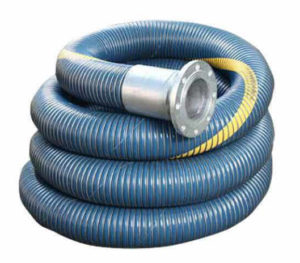
A composite hose is a variation of the hosepipe and is made from multiple layers of spirally-wrapped materials. It can be customized to serve different functions in various applications because of its versatile and adaptable nature.
In the composite hose, the materials are wrapped together in a single tube. The thermoplastic film or other fabrics are bound together by a metal inner and a second wire spiral, helix. This gives it a firm structure and makes it pressure resistant.
Composite hoses are light in structure and have great flexibility, which makes them ideal for industrial use. The multipurpose benefit it serves makes it cost-efficient. Composite hoses have a sturdy build; they are robust and also very safe to use. It also has a very durable shelf life, which gives it an extra edge over other hoses. Moreover, it can be produced quickly, which makes it a preferable choice in the industries.
Three Reasons To Use A Composite Hose
1. Flexibility
In the composite hose, the spirally-wound metal inner and outer wires give it great strength and flexibility. This helps to endure and maintain the hose integrity under great pressure during shipping and barging. The composite hose slide layers easily over the other layers, which gives it a great bend radius.
2. Chemical Resistance
The composite hoses find varied and extensive usage in the chemical industries to transfer different chemicals. As the hose is made of different chemicals, made of polypropylene, Teflon, and nylon, the composite hoses the best choice for such purposes.
Composite hoses are customizable and can be changed accordingly to accommodate the toxic chemicals. Hence, because of its capacity to handle a great variety of chemicals, it offers a high safety factor as well as a safe falling design.
Hence, composite hoses are the most adaptable choice in the chemical industries. It finds extensive use in the transfer operations.
3. Complete Safety
A composite hose is designed to be “fail-safe.” The multiple plastic layers used in this hose makes it very safe. It is fail-safe in two areas:
a) The Hose
A composite hose is made of multiple tube layers and films, because of which there is no direct leak path for liquid to follow. For the occurrence of a leak, this liquid should serpentine its path via the multiple layers of the hose through which it reaches the outer cover. Once the liquid comes to the outer cover, small droplets will form on the seam line, indicating a leak. In case a leak happens, other types of hose are vulnerable because it can collapse easily. The walls of the hose are susceptible to ruptures, and this creates extensive failure in such hoses.
b) The End Fitting
In a composite hose, the end fittings are designed in a particular manner to remain fail-safe. This minimizes the probability of the end fittings blowing off. The fittings have a special spiral shank or a tailpiece that is screwed into the composite hose. Hence, in a composite hose, these portions need to be unscrewed for the end fittings to blow out. The screw at the end of the hose, fitted into the combination, gives it a safety valve. Hence, a composite hose is the safest option for usage in industries.
To Conclude:
A composite hose is one of the most adaptable choices for industrial operations. Owing to its flexible structure, composite hose can be customized for various use. It also offers complete safety and operational efficiency.


Leave a Reply